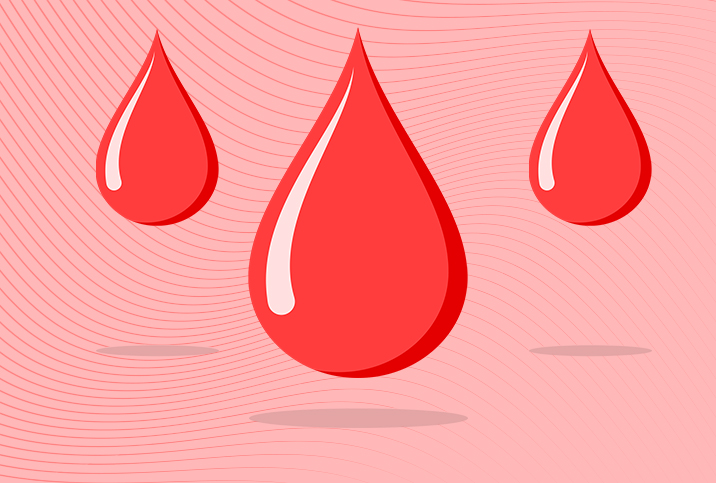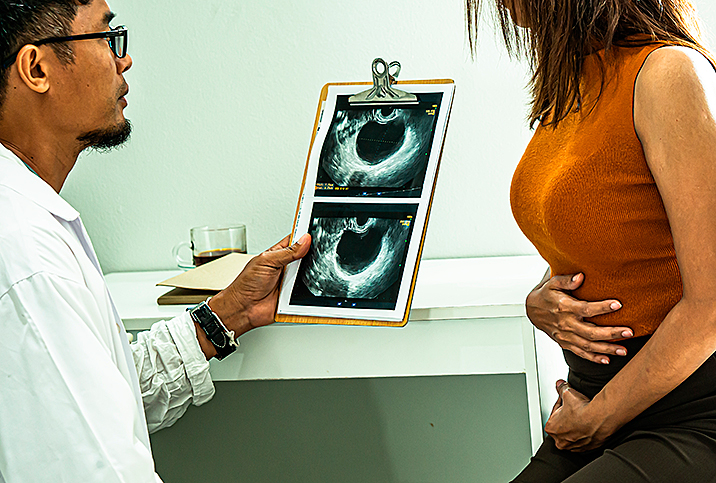Bleeding After Menopause Should Never Be Ignored

Most women expect to see big changes in their bodies during the menopausal transition. Hot flashes, vaginal dryness, fatigue, mood swings and excessive sweating are very common symptoms. While these symptoms can have a significant impact on your daily life, they are usually nothing to be too concerned about as long as you seek treatment from your doctor.
However, one symptom that should never be ignored is bleeding. Any spotting or bleeding after menopause indicates a health issue that needs to be investigated urgently.
The causes of postmenopausal bleeding
Postmenopausal bleeding affects approximately 10 percent of women older than age 55, and it can be a frightening experience when the cause is unknown. The main causes are usually polyps, endometrial hyperplasia and endometrial cancer, according to Kecia Gaither,M.D., director of perinatal services at NYC Health + Hospitals/Lincoln in the Bronx, New York City.
Polyps
Uterine polyps, sometimes referred to as endometrial polyps, are growths attached to the inner wall of the uterus. These occur due to an overgrowth of cells in the endometrium and are usually benign, although some can turn cancerous.
Polyps can range in size from a few millimeters to a few centimeters and show up alone or alongside many others. The growths often go unnoticed but can cause postmenopausal bleeding, as well as irregular bleeding in younger women.
Endometrial hyperplasia
Endometrial hyperplasia is a reproductive condition that occurs when the body produces either too much estrogen or very little progesterone, allowing the lining of the womb to grow and thicken. This occurrence can cause heavy bleeding in some women, which can lead to anemia and low energy levels if it's not treated immediately.
Endometrial hyperplasia is not the same as cancer, but it does increase the risk of developing endometrial cancer. The American Cancer Society states: "Simple atypical hyperplasia turns into cancer in about 8 percent of cases if it's not treated. Complex atypical hyperplasia [CAH] has a risk of becoming cancer in up to 29 percent of cases if it's not treated, and the risk of having an undetected endometrial cancer is even higher."
Endometrial cancer
Cancer is a huge concern given that vaginal bleeding presents in more than 90 percent of postmenopausal women with endometrial cancer. As endometrial cancer typically affects women older than 60, postmenopausal women are at greater risk, and the possibility of cancer should be investigated as soon as any bleeding is seen.
Despite this risk, cancer is rarely the cause of postmenopausal bleeding, said Christine Greves, M.D., an OB-GYN at Orlando Health Winnie Palmer Hospital for Women & Babies in Florida. In fact, a 2018 meta-analysis of over 40,000 patients published by JAMA Internal Medicine found only 9 percent of women who experienced postmenopausal bleeding were later diagnosed with endometrial cancer.
Vaginal atrophy
Vaginal atrophy is a very common cause of postmenopausal bleeding, affecting many postmenopausal women, according to Greves.
This condition occurs as the skin of the vulva and vagina become thinner and drier as a result of decreased estrogen. It can cause many uncomfortable symptoms, such as pain during sex, frequent urination, dryness, itching, and spotting and bleeding.
Yeast infections share many similar symptoms, so it's important to see your doctor as soon as you notice anything unusual. They can investigate the cause and provide the right treatment. Treating it early leads to a quicker recovery, too.
Finding the root cause
Whenever you notice any form of bleeding, you should consult your doctor straight away so they can perform the necessary tests to get to the root cause. If endometrial cancer is the cause of the bleeding, treating it very early can prevent it from spreading and becoming incurable.
"Depending on your specific symptoms and medical history, your doctor will start by examining your lower abdomen and use a speculum to examine the vagina internally to look for any obvious causes," explained Amina Albeyatti, M.B.B.S., M.R.C.G.P., a general practitioner who specializes in women's health at the Private GP Group in London. "You are likely to need an ultrasound scan, including an internal ultrasound to measure the thickness of the endometrial [womb lining] as well as looking for polyps and fibroids."
An ultrasound can spot any thickening of the endometrium, which is a common indication of cancer. During this time, your doctor may also conduct a biopsy, which involves using a thin tube to collect cells to test for any abnormalities.
Treatment options
As there's no single cause of postmenopausal bleeding, there's no single treatment option, either.
If vaginal atrophy is behind the bleeding and other symptoms, such as vaginal dryness and burning, then a topical cream is typically recommended.
"Postmenopausal women need the estrogen or lotion in this example to help sustain the premenopausal integrity of the vagina and uterus," Greves said.
Vaginal estrogen cream is applied at home and can be used around the opening of the vagina or inside, depending on your symptoms. Estrogen increases lubrication of the vagina, which can help alleviate dryness and other troublesome symptoms.
As there's no single cause of postmenopausal bleeding, there's no single treatment option, either.
If polyps are the cause of bleeding, they can be easily removed in the clinic with a polypectomy, according to Albeyatti. This procedure is minimally invasive and involves snipping off pieces of tissue using biopsy forceps. If the polyp is large, then minor surgery may be required, but this is often not the case. Most people experience little to no discomfort during the polyp removal and can typically resume normal activities the next day.
In many cases, endometrial hyperplasia can be treated with progestin, which may be administered by shot, pill, cream or intrauterine device (IUD). In other cases, a hysterectomy may be recommended to prevent the risk of cancer. This is also an option for women who would prefer not to take hormone therapy.
If a biopsy is taken and reveals endometrial cancer, treatment options depend on the severity of the cancer. In many cases, a total hysterectomy is carried out to remove and prevent the disease from spreading. Radiation therapy is commonly used alongside surgery to prevent excessive bleeding.


















